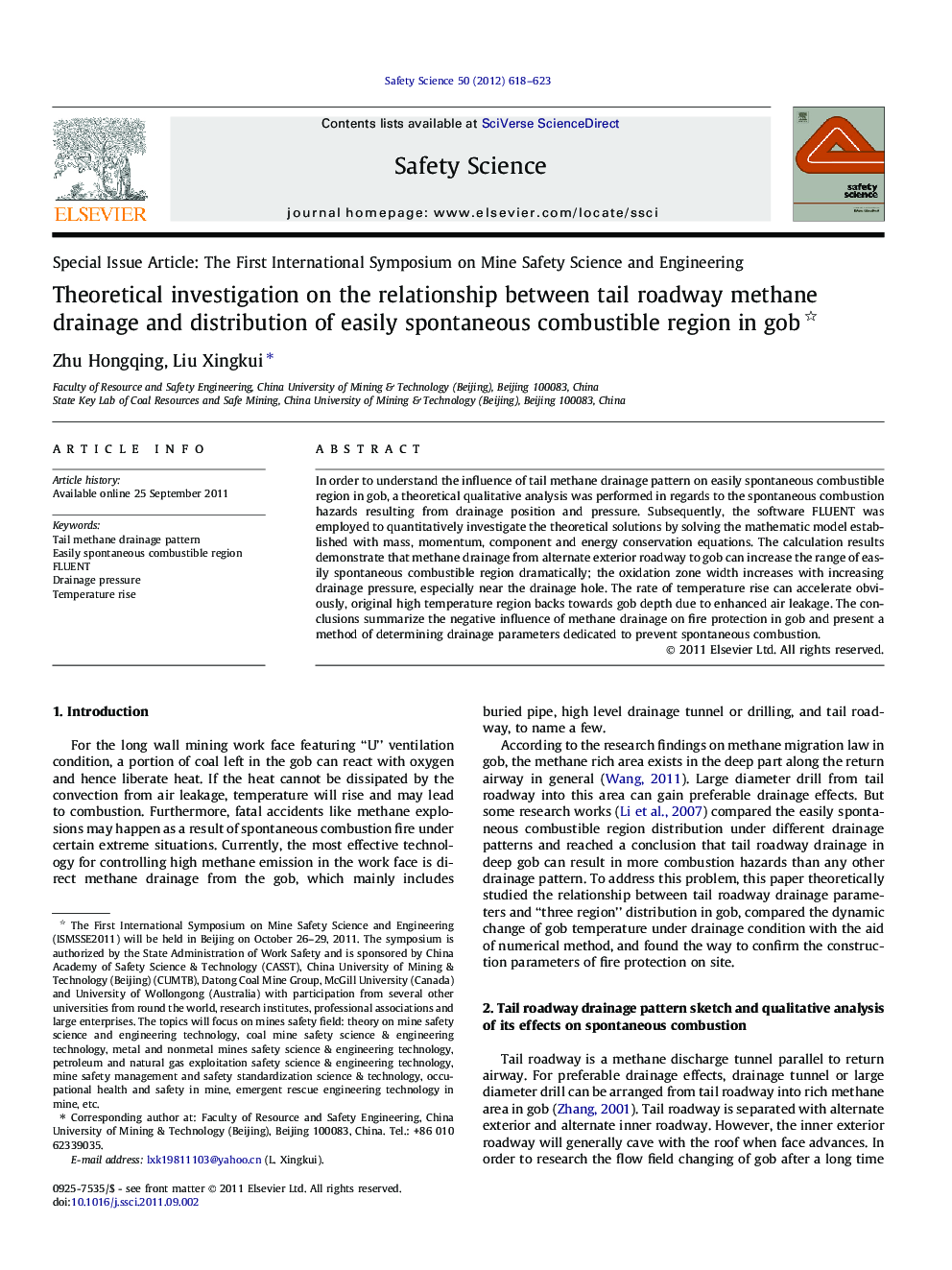| Article ID | Journal | Published Year | Pages | File Type |
|---|---|---|---|---|
| 589442 | Safety Science | 2012 | 6 Pages |
In order to understand the influence of tail methane drainage pattern on easily spontaneous combustible region in gob, a theoretical qualitative analysis was performed in regards to the spontaneous combustion hazards resulting from drainage position and pressure. Subsequently, the software FLUENT was employed to quantitatively investigate the theoretical solutions by solving the mathematic model established with mass, momentum, component and energy conservation equations. The calculation results demonstrate that methane drainage from alternate exterior roadway to gob can increase the range of easily spontaneous combustible region dramatically; the oxidation zone width increases with increasing drainage pressure, especially near the drainage hole. The rate of temperature rise can accelerate obviously, original high temperature region backs towards gob depth due to enhanced air leakage. The conclusions summarize the negative influence of methane drainage on fire protection in gob and present a method of determining drainage parameters dedicated to prevent spontaneous combustion.
► A theoretical qualitative analysis was performed in regards to the spontaneous combustion hazards. ► The software FLUENT was employed to investigate the theoretical mathematic model. ► The methane drainage can increase the range of easily spontaneous combustible region. ► The oxidation zone width increases with increasing drainage pressure near the hole.
